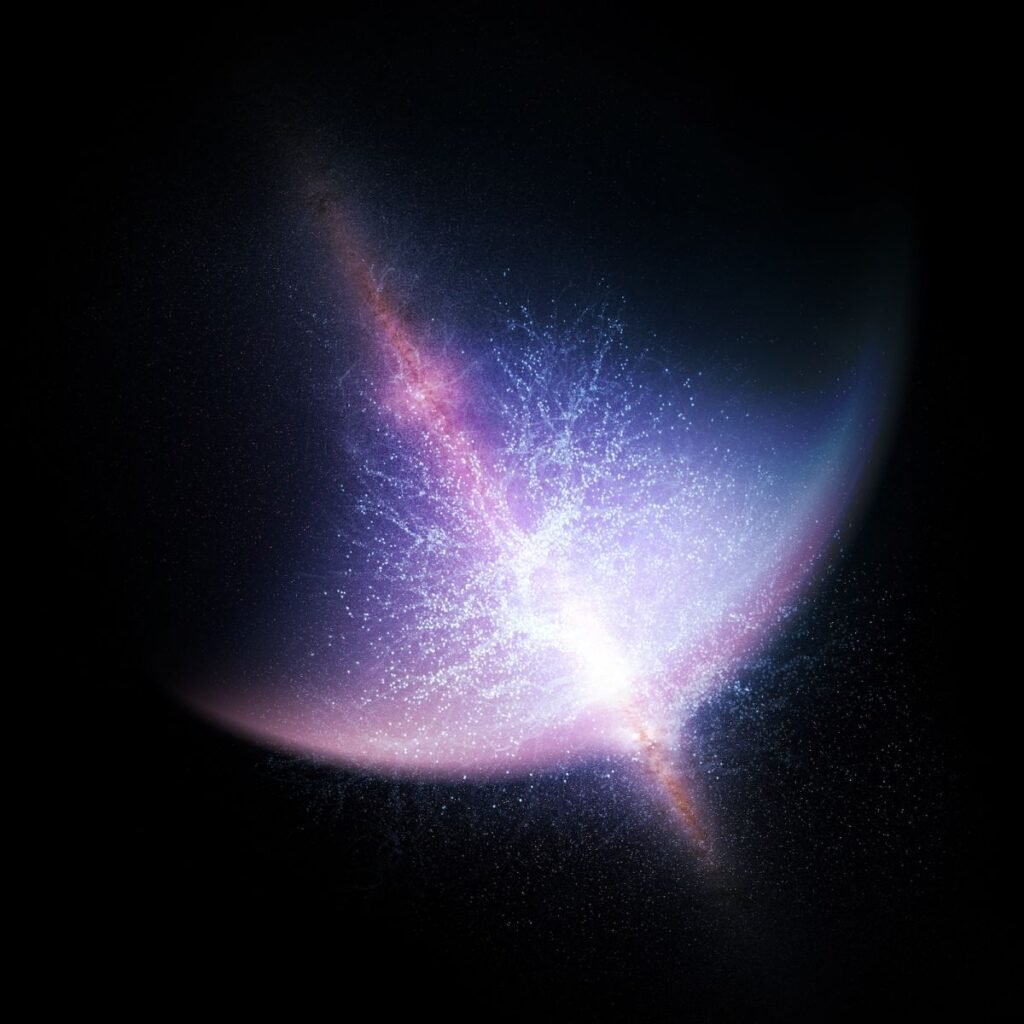According to the 238th virtual briefing of the American Astronomical Society on June 7, a newly discovered colossal cluster of galaxies spreading over 3.3 billion light-years is among the world’s largest known structures. This huge arrangement is called the Giant Arc, which consists of galaxies, galactic clusters, and lots of gas and dust. It is located about 9.2 billion light-years away from us and occupies roughly a 15th of the observable universe. This ‘Giant Arc’ is so big that it could “Overturn Cosmology As We Know It.”
This ‘Giant Arc’ might span 20x the Moon’s width in the night sky
Alexia Lopez, a cosmologist, and her colleagues at the University of Central Lancashire in Preston, England, were compiling maps of objects in the night sky using the light from about 120,000 quasars, which are several bright cores of galaxies where supermassive black holes are consuming material and spitting out energy. The “Giant Arc” was observed via the studying of light from roughly 40,000 quasars, during the Sloan Digital Sky Survey.
Quasars are considered to be large supermassive black holes constantly feeding at the center of a galaxy. And this massive feeding rage creates a light so bright that it can be seen at greater distances than almost any other event. But while the quasar-generated light is in transit to Earth, some of it is absorbed by atoms in and around the galaxies in our proximity.
The signature of the Giant Arc lies in magnesium atoms that have lost a single electron, while passing through the halos of galaxies roughly 9.2 billion light-years away. By analyzing the quasar light absorbed by the atoms, the astronomers uncovered a picture of the asymmetrical curve of dozens of galaxies, reaching roughly one-fifteenth the radius of the entire observable universe. This structure is invisible to the naked eye, but if it could be seen in the night sky, the arc of galaxies would span roughly 20 times the full moon’s width.

Evidence for ‘Giant Arc’ exists, but not convincing enough for some
“This is a very fundamental test of the hypothesis that the universe is homogeneous on large scales,” said astrophysicist Subir Sarkar at the University of Oxford, who researches colossal structures of the cosmos. If the Giant Arc of the distant universe is confirmed to exist, “this is a very big deal.” But Sarkar has doubts.
“Our eye has a tendency to pick up patterns,” and some people have made claims as strange as, seeing Stephen Hawking’s initials written in fluctuations of the cosmic microwave background. Apparently, this would make Stephen Hawking’s initials as old as the oldest light in the universe which turns out to be absurd.
To discover the odds of galaxies lining up in such a gigantic cosmic march, Lopez executed three statistical tests, and all of them suggested it was no delusion. This is impressive, but not convincing enough for Sarkar. “Right now, I would say the evidence is tantalizing but not yet compelling,” he said in the Science News report.
It looks like until additional observations are made to further confirm or falsify Lopez and his colleagues’ Giant Arc hypothesis, we shouldn’t throw the whole cosmology out the window.
Let us know in the comments, what do you guys think about this?
